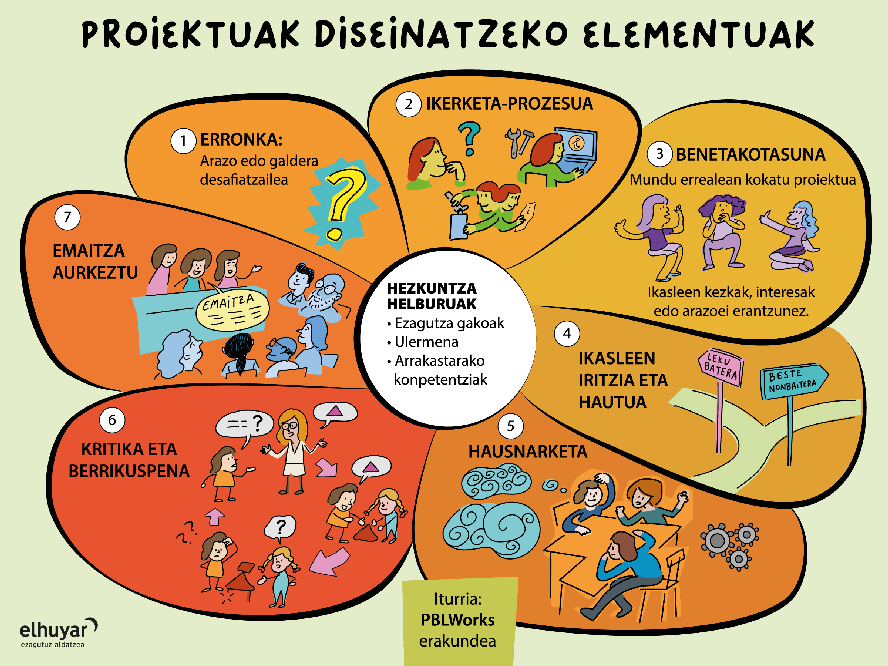Project design elements
Text created by automatic translator Elia and has not been subsequently revised by translators. Elia Elhuyar
The seven basic elements that our students must have to design their projects are:
- Challenge: The project must respond to a problem or issue to be resolved. Attention! The level of difficulty should be adequate, neither too easy nor too difficult.
- Research process: Students must commit to asking questions, locating resources and applying information in a rigorous and comprehensive process.
- Authenticity: the project must respond to the concerns, interests or personal problems of the life of the students, but without being the first to think.
- Opinion and choice of students: students must make decisions about the project, how they will work and what they will create. More experience, greater freedom of decision.
- Reflection: students and teachers must reflect. For example, on learning, on the effectiveness of research activities and projects, on the quality of student work, on the barriers that arise and on strategies to overcome them.
- Review and review: students will give feedback, receive and apply to improve their processes and products. Feedback is the most important instrument the teacher has, but it must be accurate and immediate.
- Presentation of results: students must present their project to a specific audience, outside the classroom, adjusting the discourse to the nature of the public.
To delve into the contents click here.






